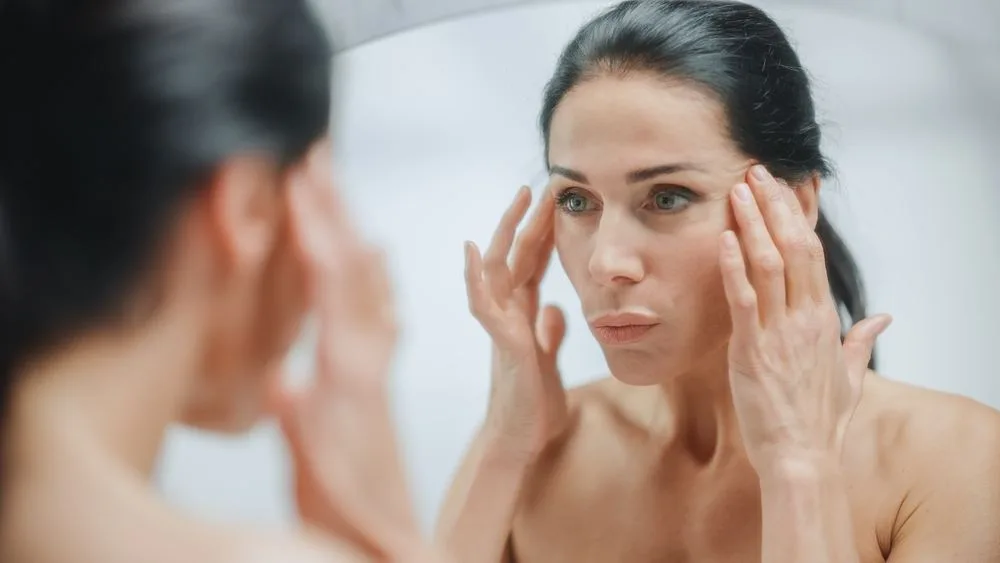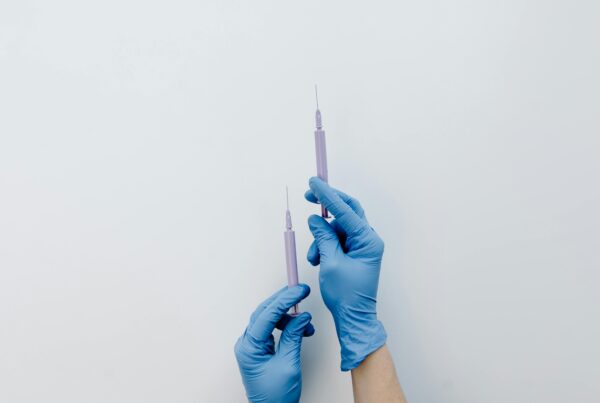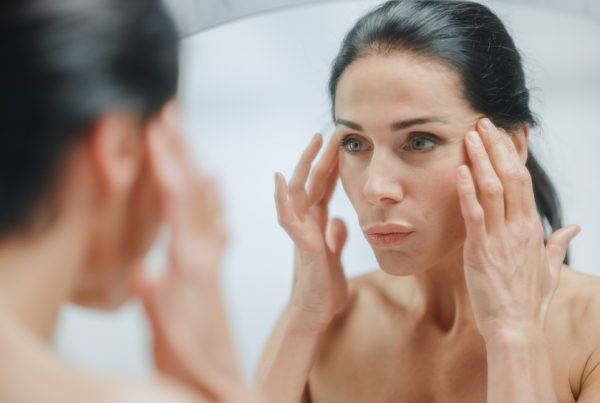The desire for a more sculpted and refined facial appearance has driven many individuals today to seek face-slimming treatments. From non-invasive methods to surgical interventions, the options are vast and varied. If you’re contemplating undergoing a face-slimming procedure, a wealth of information is crucial to navigate the process confidently. This article delves deep into several aspects you should consider and actions to take, ensuring you’re well-prepared for your journey. Longevity Live Paid Content.
Determine The Reason
Embarking on any cosmetic journey should begin with introspection. Understanding your motivation for seeking a face-slimming procedure sets a foundation for all subsequent decisions.
There are myriad reasons why individuals opt for these treatments—from enhancing their natural aesthetic and boosting self-confidence to addressing medical conditions or reducing age-related changes.
However, it’s imperative to separate genuine desires from external influences, ensuring that your decision is rooted in personal goals rather than societal pressures or fleeting trends.
Types Of Procedures
The cosmetic industry offers a diverse range of face-slimming treatments tailored to cater to different needs and expectations. Broadly speaking, these procedures can be classified into non-invasive treatments and surgical interventions.
-
Non-Invasive Treatments
These are procedures that don’t require incisions or significant downtime. Examples include Botox for jaw slimming, which can be used to slim down the jawline by relaxing the masseter muscles, and facial fillers that can redefine the contours of the face.
-
Surgical Interventions
For those seeking more permanent or pronounced changes, surgical procedures might be the best route. Buccal fat removal, for instance, involves the extraction of fat pads from the cheeks, resulting in a more chiseled look.
Facelifts and neck lifts are more comprehensive options that remove excess skin and tighten underlying tissues. When considering the type of procedure, it’s essential to balance desired outcomes with potential risks, recovery time, and long-term maintenance.
Choosing the right face-slimming procedure boils down to individual preferences, aesthetic goals, and comfort levels. Regardless of the choice, consulting with trusted professionals ensures that decisions are well-informed, aligning seamlessly with one’s vision of beauty and self-confidence.
Research Potential Side Effects
Every cosmetic procedure, regardless of its invasiveness, comes with its set of potential side effects and complications. While advanced technologies and experienced professionals have significantly minimized these risks, it’s always wise to be informed. Bruising, swelling, and temporary discomfort are common after most treatments.
However, more severe complications, although rare, can include infections, scarring, or asymmetry. An informed decision involves understanding these side effects, evaluating how they fit into your lifestyle, and taking precautions to minimize their occurrence.
Consultation
Perhaps one of the most pivotal steps in preparing for a face-slimming procedure is the consultation phase. Engaging with a board-certified plastic surgeon or dermatologist provides an opportunity for personalized advice tailored to your facial structure, skin type, and desired outcomes.
During a consultation, professionals can assess your suitability for a procedure, offer insights into expected results, and answer any queries. This interaction isn’t just about gathering information; it’s also an opportunity to gauge your comfort level with the practitioner. Trust and open communication are paramount for a satisfactory cosmetic experience.
Budgeting And Financing
Financial considerations play a significant role in cosmetic endeavors. While face-slimming procedures can offer transformative results, they also come with a price tag. Costs can vary based on the procedure, the professional’s expertise, geographical location, and any additional post-operative treatments or products.
Some treatments might also require maintenance sessions, further adding to the total expense. It’s crucial to understand the full financial scope, including potential unforeseen costs, before committing. Exploring financing options, payment plans, or potential insurance coverage can help ease any financial strain.
Recovery Time
The post-procedure phase is as integral to the overall experience as the treatment itself. Recovery times vary depending on the chosen procedure. For instance, non-invasive treatments like Botox or facial fillers might only require a day or two of downtime, if any. On the other hand, more involved surgical interventions, such as facelifts or buccal fat removal, might necessitate several weeks of reduced activity.
During the recovery period, certain activities, like strenuous exercise or direct sun exposure, might need to be curtailed. Additionally, social engagements and professional commitments could be impacted, so it’s essential to factor these into your plans. Properly planning for this downtime, whether it means taking leave from work, arranging for childcare, or simply stocking up on books and movies, can make the healing process smoother and less stressful.
Set Realistic Expectations
In the realm of cosmetic enhancements, expectations play a pivotal role in determining satisfaction levels. It’s vital to approach face-slimming procedures with a balanced perspective. While these treatments can significantly alter one’s appearance and enhance natural features, they aren’t a ticket to perfection. Professionals can offer a wealth of insights through before-and-after photos, digital simulations, and honest discussions about potential outcomes.
Remember, every individual’s face and body react differently to treatments. Factors such as age, skin elasticity, and general health can influence results. Moreover, beauty is subjective. What appears as a favorable outcome to one person might not resonate with another. Ensuring alignment between your desires and the realistic outcomes of a procedure minimizes the chances of post-operative disappointment.
Post-Procedure Care
Following the recommended aftercare routine is paramount for optimal results and to mitigate potential complications. After a face-slimming procedure, professionals will provide guidance on wound care, medications, activity restrictions, and skincare routines. This guidance could involve instructions on cleaning incision sites, using specific ointments or creams, taking prescribed or over-the-counter pain medications, and more.
For some procedures, there might be recommendations to avoid specific foods, refrain from alcohol or smoking, or use particular skincare products. Adhering to these guidelines not only ensures the longevity of the results but also promotes faster healing and reduces the risk of complications.
Second Opinions
A decision as impactful as altering one’s facial appearance warrants thorough consideration, and sometimes, this involves seeking multiple viewpoints. While a consultation with a professional can provide a wealth of information, there’s no harm in seeking a second or even third opinion. Different professionals might have varying approaches, techniques, or experiences that could shed new light on potential results or risks.
Multiple consultations can offer a broader perspective, allowing individuals to make a more informed decision. Moreover, it provides an opportunity to find a practitioner with whom one feels most comfortable and aligned in terms of aesthetic goals.
Mental And Emotional Preparation
Embarking on a cosmetic journey is not solely a physical endeavor—it deeply intertwines with one’s emotional and mental state. Anticipating the potential psychological effects of a procedure is crucial. The immediate post-operative phase might bring forth feelings of vulnerability, anxiety, or even momentary regret. As the body heals and changes become more pronounced, these feelings could evolve, leading to a more harmonious acceptance of the new appearance.
It’s beneficial to have a strong support system during this time, whether it’s friends, family, or professional counseling. Engaging in open discussions about feelings, expectations, and fears can provide clarity and comfort. Remember, adjusting to a new appearance, even if it’s a desired change, can be a process. Patience and understanding of oneself can make the journey smoother.
Health Assessment
Before diving into any cosmetic procedure, an in-depth health assessment is paramount. The body’s current state can significantly influence the outcome and recovery of the treatment. Certain medical conditions, such as blood clotting disorders or immune deficiencies, might make an individual more susceptible to complications. Medications, too, can impact the procedure, either by interfering with anesthesia or affecting the healing process post-operation.
It’s imperative to have an honest dialogue with the chosen professional about one’s medical history, current health status, and any medications or supplements taken regularly. This comprehensive overview ensures the safest possible environment for undergoing the procedure, with personalized adjustments made as needed.
Avoid Certain Medications And Supplements
Many are unaware that certain medications and supplements can influence the outcome of cosmetic procedures and the body’s healing capabilities. Some medicines, especially those with blood-thinning properties, can heighten the risk of bleeding during and after the procedure. Common over-the-counter pain relievers like aspirin and ibuprofen, as well as supplements such as vitamin E and fish oil, can have similar effects.
A thorough review of one’s daily medications and supplements with a medical professional is essential. They will advise on which substances to temporarily halt before and after the procedure, ensuring the best possible healing environment and reducing potential risks.
Avoid Smoking And Alcohol
Both smoking and excessive alcohol consumption can impede the body’s natural healing processes. Smoking restricts blood flow, potentially delaying wound healing and increasing the risk of complications such as infections or scarring. Alcohol, on the other hand, can thin the blood, raising the chances of excessive bleeding during the procedure and into the recovery phase.
Most professionals will recommend refraining from smoking and limiting alcohol consumption for a specific period before and after a face-slimming procedure. Following this guidance can greatly enhance recovery speed and the quality of results.
Prepare For Aftercare
Beyond the immediate post-procedure guidelines, one must also plan for the subsequent aftercare phase. This phase could involve a modified skincare routine, regular check-ups with the practitioner, or potential touch-up sessions. Depending on the procedure, you might also need specialized skin care products, sunscreens, or scar-minimizing treatments.
Thinking ahead and preparing for this period ensures a more comfortable and stress-free recovery. Stocking up on recommended products, scheduling follow-up appointments in advance, and being vigilant about aftercare can be instrumental in maintaining and enhancing the results of the procedure.
Final Thoughts
A face-slimming procedure, like any significant decision in life, requires thorough research, reflection, and preparation. From understanding one’s motivations to diligently following aftercare routines, each step plays a crucial role in the overall experience and outcome.
Armed with this comprehensive guide, individuals can confidently navigate the intricate journey of facial enhancement. Remember, the goal is not just to enhance physical appearance but to align the external with one’s inner vision of self.





![women [longevity live]](https://longevitylive.com/wp-content/uploads/2020/01/photo-of-women-walking-down-the-street-1116984-100x100.jpg)










